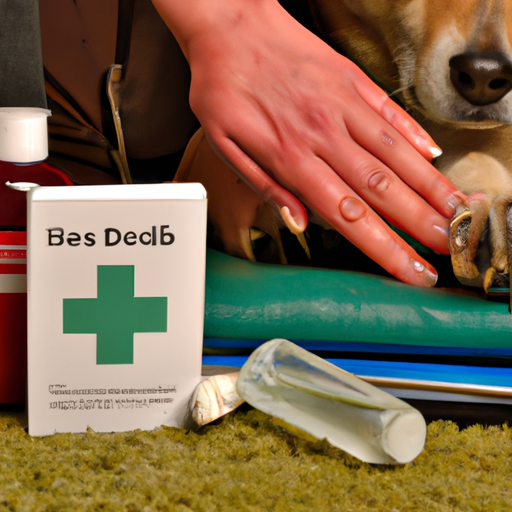As a caregiver to our furry friends, it’s essential to understand the various ailments that can affect them, and how best to respond. One such condition involves blisters on your dog’s paws. In this guide, we’ll explore how to treat these blisters with the utmost care and consideration.
1. Recognizing Blisters on Your Dog’s Paws
Before you can treat blisters, you need to be able to identify them. Blisters may appear as small, fluid-filled bumps on your dog’s paw pads. They might be red, swollen, or have a clear or yellowish fluid inside. Here’s what you need to look for:
- Swelling or redness on the paw pads
- Limping or reluctance to walk
- Excessive licking or chewing at the paws
- Small, fluid-filled bumps on the paw pads
2. Understanding the Causes
The causes of blisters on dog’s paws can vary. It could be a result of excessive licking, chemical irritants, burns from hot pavement, or even allergies. Here’s a look at some common causes:
| Cause | Description |
|---|---|
| Excessive Licking | Dogs often lick their paws when they’re irritated or itchy. This can lead to blisters. |
| Chemical Irritants | Cleaning products, pesticides, or salt used to melt ice can irritate your dog’s paws, leading to blisters. |
| Hot Pavement | Walking on hot surfaces can cause blisters on your dog’s paws. |
| Allergies | Allergic reactions to certain foods or environmental factors can cause blisters on paws. |
3. Treating Blisters on Your Dog’s Paws
To treat your dog’s blisters, you’ll want to follow a few key steps.
- Clean the area: Use a mild antiseptic to clean the blister and surrounding area.
- Apply a topical ointment: Use a vet-approved ointment to provide relief and promote healing.
- Bandage the paw: Protect the blister with a clean bandage.
- Prevent licking: Use a cone or other device to prevent your dog from licking the blister.
- Rest: Limit your dog’s activity to prevent further irritation.
Remember, always consult with a vet before starting any treatment.
4. Preventing Future Blisters
Prevention is always better than cure. Here are a few strategies to prevent blisters on your dog’s paws:
- Regularly inspect your dog’s paws for any signs of injury or irritation.
- Avoid walking your dog on hot pavement.
- Limit exposure to chemical irritants.
- Treat allergies promptly.
- Discourage excessive licking.
5. When to See a Vet
If your dog’s blisters don’t improve after a few days of home treatment, or if they seem to be in pain, it’s time to see a vet. Additionally, if your dog has frequently recurring blisters, a vet visit is warranted to investigate underlying causes.
Frequently Asked Questions
Q: Can I pop my dog’s blister?
A: It’s generally not recommended to pop a blister on a dog’s paw. This can lead to infection.
Q: How long do blisters take to heal?
A: With proper care, most blisters will start to heal within a few days.
Q: Can I use human blister ointment on my dog?
A: Not all human medications are safe for dogs. Always consult with a vet before using any new medication.
Remember, as a caregiver, your job is to keep your dog safe, healthy and happy. By understanding how to recognize and treat blisters on your dog’s paws, you’re taking a big step towards fulfilling that role.



